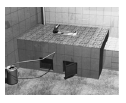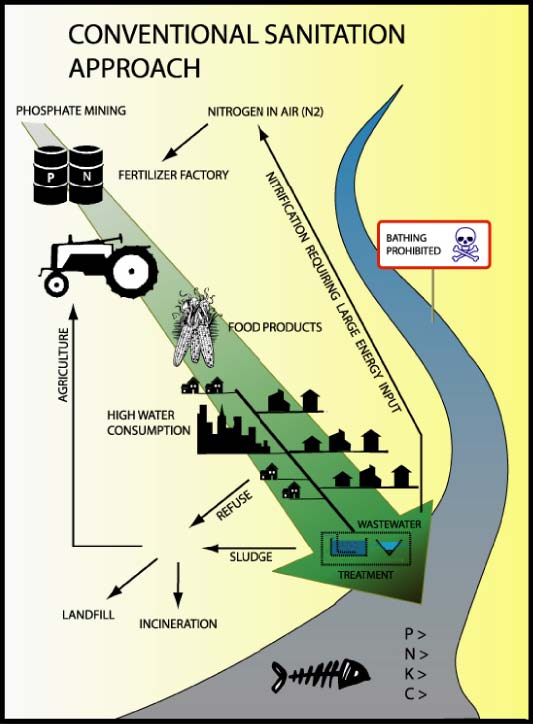Ecological Sanitation
Protecting the environment and conserving resources 1, 2
Water, nutrientNutrient: A substance that provieds nourishment for growth and metabolism. Plants absorb nutrients mainly from the soil in the form of minerals and other inorganic compounds, and animals obtain nutrients from ingested foods and energy management practices of the conventional sanitation system are unsustainable. Large quantities of clean, potable water are used to carry excreta through sewer systems even though water scarcity affects many regions of the world.
Moreover, some 90% of the wastewater generated worldwide are reportedly discharged untreated into receiving water bodies. Excessive nutrient loads in aquatic systems stimulate plant growth and reduce dissolved oxygen in the water. This, in turn, can have adverse impacts such as fish dying, loss of aesthetic and recreational value, and high cost of treating raw drinking water.
On the other hand, nutrients contained in wastewater discharged to the environment are “lost” and artificial fertilizers must be produced to cover the agricultural nutrient demand. Production of artificial nitrogen fertilizer is energy-intensive and phosphate rocks are mined for the production of phosphorus fertilizers. However, phosphorus reserves are likely to be depleted within 50-100 years.









